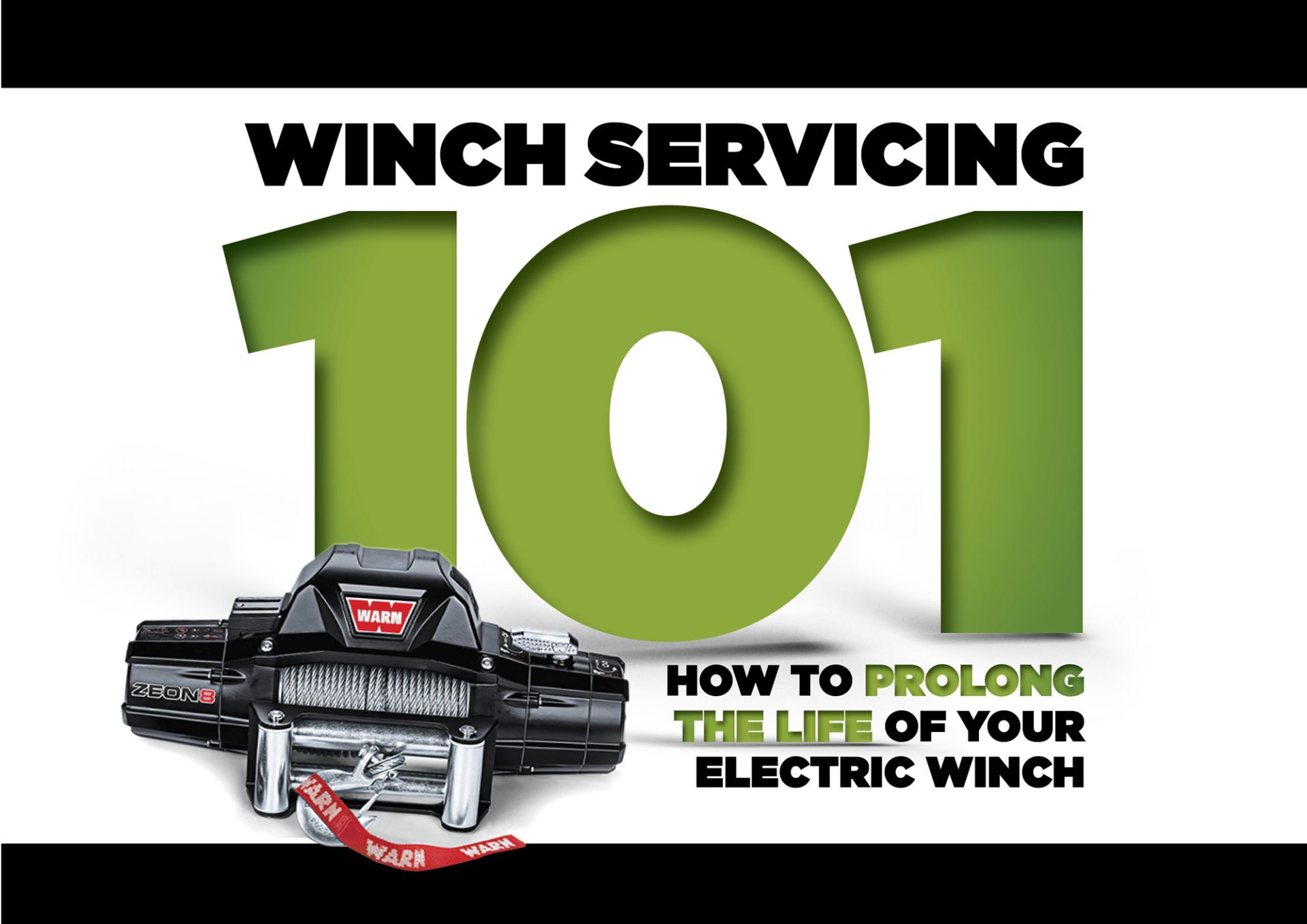A winch is one of those things that you just don’t think much about until you need it. If you’ve ever known the pain of getting stuck, thinking smugly to yourself: “Too easy – I’ve got a winch!” only to find out that it’s no longer working, this article is for you.
The problem with winches is that they’re constantly exposed to the elements. Dirt, dust, rain, mud, sand, filth; your winch cops them all on a near-daily basis. I’m sure you can see where I’m going with this, right? Yep, they need maintenance if they’re going to last. Luckily it’s a fairly easy job to knock over and can be done in an hour or so without too many dramas, and it should really be seen as a part of your trip preparation if you’ve got a few days (or weeks) in the bush coming up.
Here’s how we ensure our electric winders are ready to keep the smug grins firmly plastered on our faces when we find ourselves door-handle deep in the muck.
BUT FIRST, A QUICK REFRESHER ON WINCHES
There are four main parts to the ubiquitous low-mount electric winch: The rope (or cable), the motor and control box, the gearbox, and the drum and brake assembly. And they all need attention every three months or so… but I’ll get to that in a minute. The motor receives a current from a set of solenoids located in the control box and spins a driveshaft running through the hollow drum section to a gearbox, which uses planetary reduction gears (similar to those found in an automatic transmission) to turn the drum to wind the rope in or spool it out. There is also a clutch mechanism which can be engaged for winching in/out or allowing the drum to freespool (which is for when you’re running your rope out to attach to an anchor point).
Of the four main parts, the one least likely to need anything done to it is the drum and brake assembly. On most quality winches they’re pretty hardy and not a lot goes wrong with them. We have heard of some brands of cheaper winches having brake issues; but by and large they’re fairly decent and shouldn’t need work. If your unit fails in this component, you may want to take it to a specialist as it’s a finicky job that’ll see you inventing new swear words at an alarming rate. The solenoids, motor, rope and gearbox should all be closely inspected, however…
CLEANLINESS IS KEY
When talking synthetic rope or wire cable (do people still use this?), keeping it clean will make it last. Unspool your rope completely off the drum and give it a good wash in a bucket of mild soapy water. As a side note, don’t grease your wire cable as it’ll only attract dirt and muck. Closely inspect the rope/cable, looking for any frayed strands or damage. These will create weak points so it may be worth re-splicing the rope or replacing the cable. Once you’re done, re-spool it onto the drum under tension – making sure to get at least the first few wraps lined up as perfectly as you can. Winching-in on a slight incline (or on flat ground with the handbrake on a couple of clicks) is the generally-accepted method of re-spooling. It’s a good idea to do this to new winches, as the rope is rarely spooled-on under tension from the factory – which can create bunching, flat spots or even birds’ nests in the line when you go to use it.
THE ELECTRICS
Pop the cover off the control box and inspect the solenoids and all connections. Give the terminals a light going-over with some fine-grit sandpaper and use a dab of electrical grease to protect them from corrosion. Inspect all wiring for damage while you’re there. Remove the end cap from the motor and inspect the rotor and brushes for wear – these should last a good long time but will eventually need replacing. Clean and reseal everything before reassembling, making sure the drain plug is free of any blockages. Many people tap a thread into the plug-hole and run a breather tube up into the engine bay to prevent water and mud ingress – a good idea if you regularly drive in such conditions.
THE GEARBOX
Remove the gearbox from the end of the winch and thoroughly clean and re-grease the planetary gears. You only want a light smearing over the moving parts. You can use the same heavy-duty grease that you pack your CV joints with, or a marine grease with a high temperature rating. If you do regular water crossings or are going somewhere that’ll likely have them, this step is incredibly important. Again, check that the seals are in good nick and replace them if needed.
USE IT OR LOSE IT
Just about the worst thing you can do for your winch is not use it regularly. As mentioned, it gets subjected to a lot of water, grit, dust and crud just by being on the front of your vehicle. Even when in use, the hot air inside the housings expands and the winch can suck in moisture as it cools – leading to corrosion. By regularly using it (re-spooling the rope is a great way to do this) you’re keeping it all lubed-up and ready to go.









